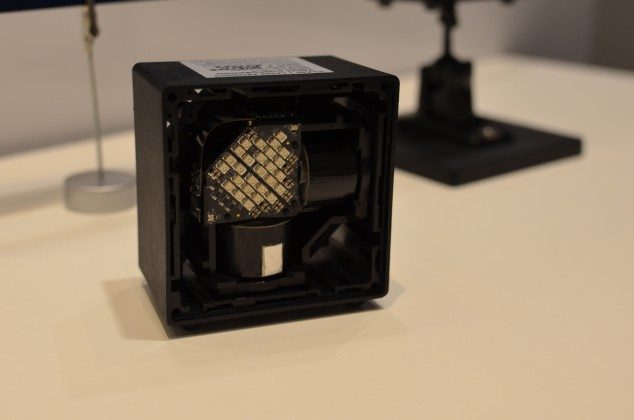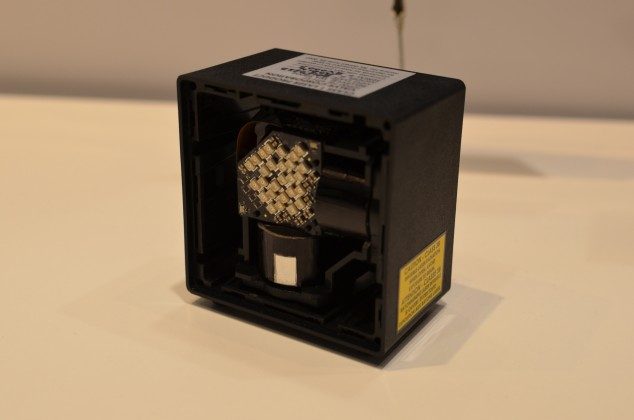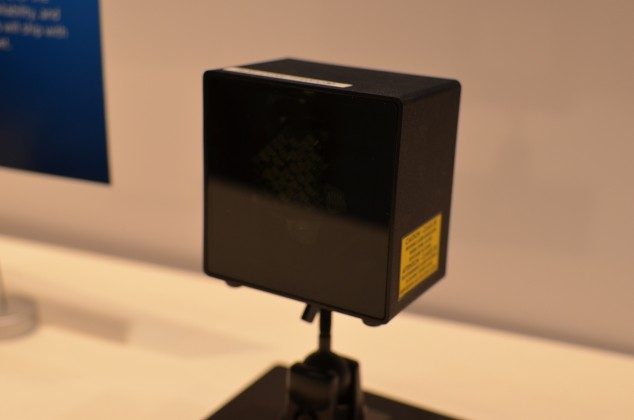1Welcome to Valve’s Steam VR Mini-museum

Virtual reality is still in its infancy. Many hard problems are being worked through and thus, the hardware to deliver compelling VR experiences is still evolving. Anyone who’s followed the VR space for a while will already be familiar with Oculus’ evolutionary path from Kickstarter to current prototype, but Valve’s work has always been shrouded in mystery.
The world came to know Valve’s virtual reality technology through a demonstration held at Valve’s dedicated developer event, Steam Dev Days in January 2014. “The Room” featured a relatively advanced VR Headset prototype from Valve’s R&D lab and used fiducial markers placed on the walls and ‘on-headset’ camera’s to track the user’s movements in 3D space.
Fast forward to the Mobile World Congress in Barcelona on Sunday 1st March and HTC announce that they’re the hardware partner Valve has chosen to bring Valve’s flagship Steam VR system to market.
So what happened in the time between each of the above events that lead us to hardware we’ve now had the opportunity to try at GDC 2015? Valve figured you’d ask, and has setup a mini-museum charting the research and development steps taken to deliver the developer level hardware on show at this year show. Here’s a visual tour of that museum timeline, complete with footnotes.
Use the navigation arrows above to move through the slides.
2Fiducial-based Positional Tracking – May 2012
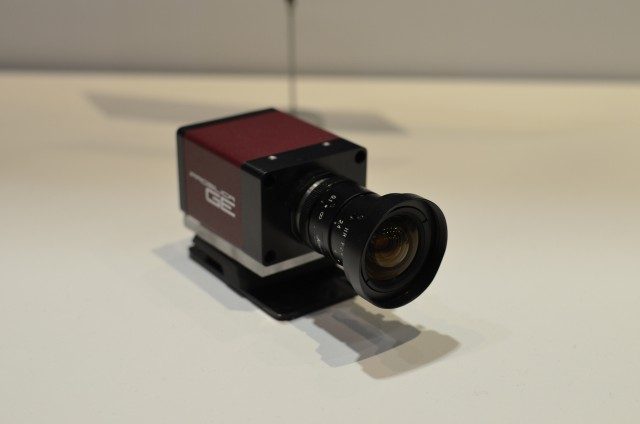
“Early in our exploration of wearable displays we realized there was a lack of good tracking systems. So we developed this system and ended up using it on many subsequent VR experiments including the “Room Demo”. The system uses head-mounted machine vision cameras pointed at markers using the April Tag format. The resulting images are processed using standard machine-vision techniques to get a pose. Over the years markers have become a regular feature in our office.”
3Telescope Low-Persistence Prototype – Jan. 2013
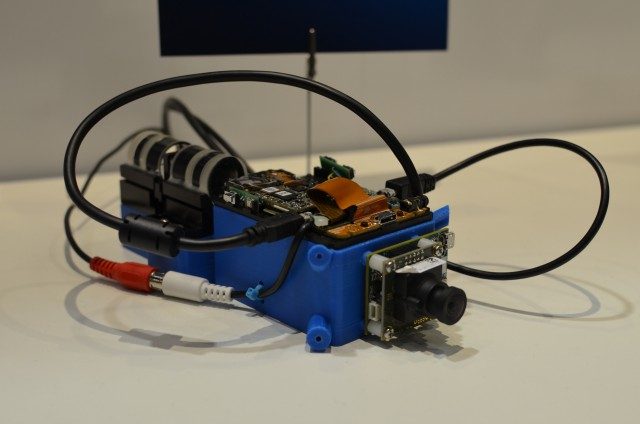
“The telescope was a zero-persistence, near-zero latency, single-eye prototype display. Tracking was the same system as “The Room”, using fiducial positional tracking with IMU sensor fusion. Latency from motions to photons was measured as 4 milliseconds. The visual effect was that of looking through an empty tube at a different three-dimensional space.”
4First Low-Persistence AMOLED Panel – January 2013
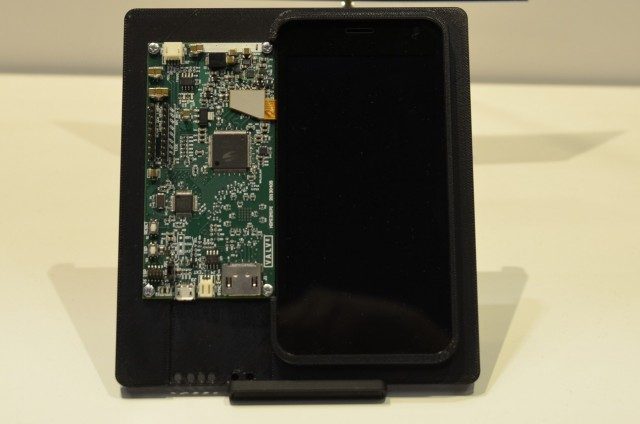
“Our experiments with the telescope showed us that low-persistence displays worked well. The next step was to figure out how to build a headset that included a low-persistence display. With their fast switching times, AMOLED panels were a candidate, but were not designed to operate the way we needed.
We figured out how to achieve high frame rates and low persistence with off-the-shelf-panels and developed this board to implement the technique.”
5TF 2 ‘VR Mode’ Shipped – March 2013
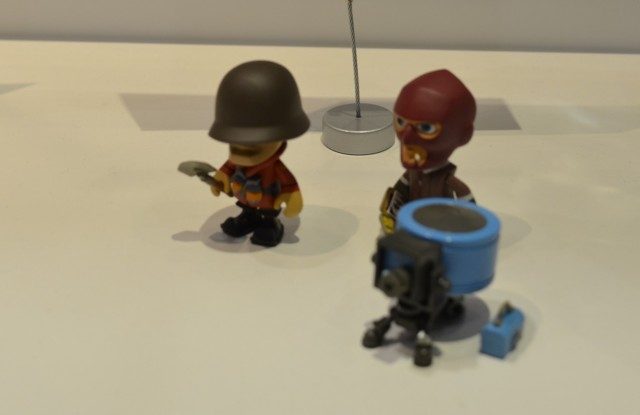
“As part of our early experiments into building VR experiences we decided to port one of our existing games to VR. Team Fortress 2 was the obvious choice because if its frequent update schedule. After about six months of work we shipped VR support as a beta in March of 2013.”
6Early Low-Persistence Headset – April 2013
“Once we had individual panels up and running the next step was to put them into a wearable headset. We combined the panels with the fiducial-based positional tracking. The result was our first glimpse of presence. This early headset was used to convince many hardware partners and software developers of the potential of VR.”
7Early Laser Tracking System – September 2013

“It was obvious from the start that fiducial was not something anyone would be willing to put on their walls. So we started working on alternative tracking systems early. The laser tracking system we are now using came out of one of them. This (above) is similar to the ones in the demo rooms, just built out of two hacked up hard drives.”

8“The Room” Demo – September 2013
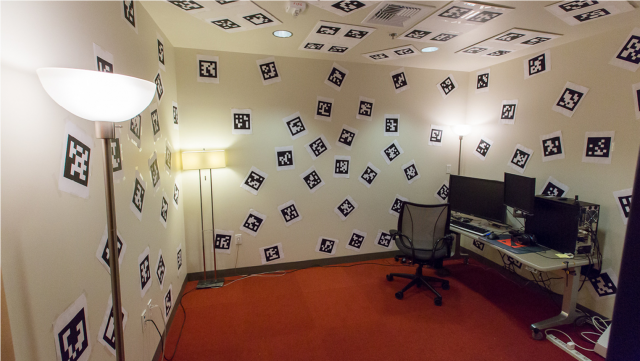
“When we combined our work on optical tracking, sensor fusion, displays, and optics into a single system, we felt we had crossed a critical quality threshold. We consistently acheived a feeling of presence in the virtual space. It was time to start showing people what a modern VR system could do. We developed the demo now known as “The Room,” a set of 18 virtual spaces taht demonstrated the level of sensory experience that a VR system could communicate to the user.”
9Desktop Dot Tracking and Controllers – Oct. 2013
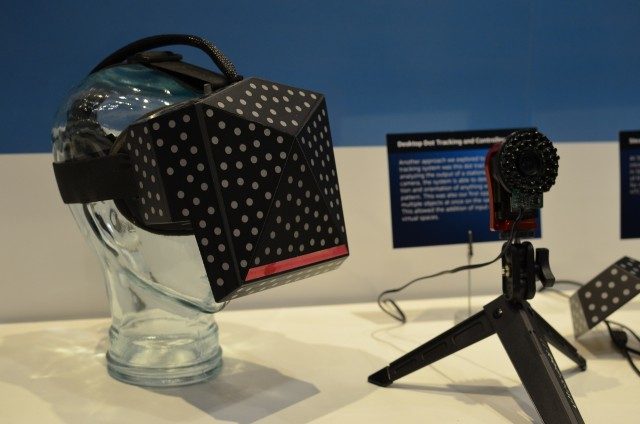
“Another approach we explored to build a shippable tracking system was this dot tracking system. By analysing the output of a stationary machine-vision camera, the system is able to determine the position and orientation of anything with a known dot pattern. This was also our first opportunity to track multiple objects at once on the same computer. This allowed the addition of input devices into our virtual spaces.”
10Steam VR Arrives and “The Room” Demo’d to Public – Jan. 2014

“At Steam Dev Days in January of 2014 we introduced the SteamVR SDK and VR mode in Steam. We have continued to develop both of these over the past year to add support for new tracking systems, controllers, and HTC hardware.”
“The Room was first demonstrated to about 80 attendees of the Steam Dev Days conference, and since that time has been shown to thousands of people across several installations. This demo was the first time most people were able to experience presence in VR.”
11First Laser Tracked Headset – May 2014
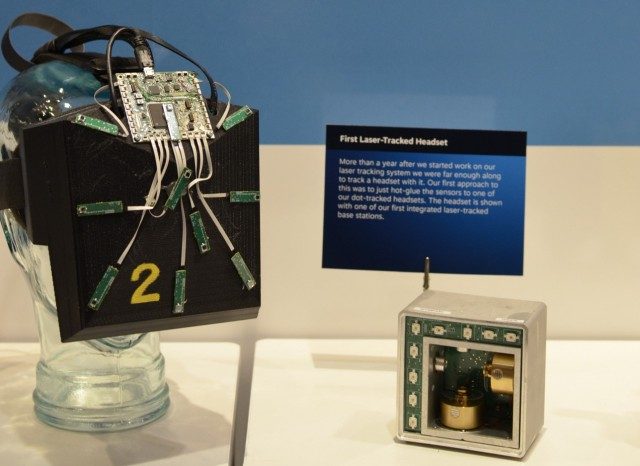
“More than a year after we started working on our laser tracking system we were far enough along to track a headset with it. Our first approach to this was to just hot-glue the sensors to one of our dot-tracked headsets. The headset is shown with one of our first integrated laser-tracked base-stations.”
12First Laser-Tracked Input – October 2014
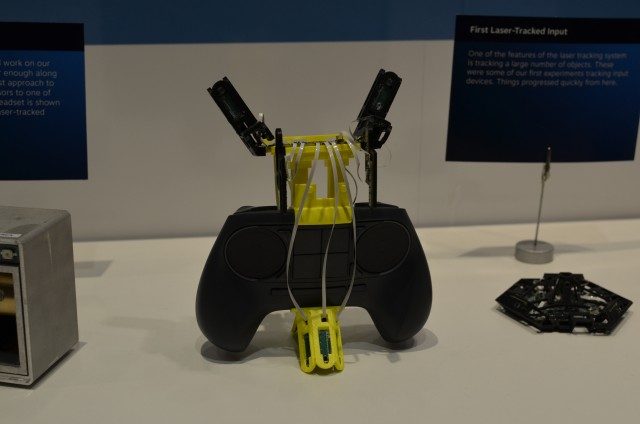
“One of the features of the laser tracking system is tracking a large number of objects. These were some of our first experiments tracking input devices. Things progressed quickly from here.”
13V minus-1 Headset – November 2014
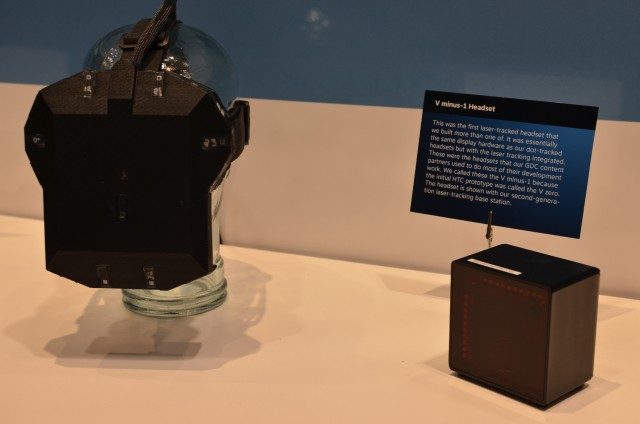
“This was one of the first laser-tracked headset that we built more than one of. It was essentially the same display hardware as our dot-tracked headsets but with the laser tracking integrated. These were the headsets that our GDC content partners used to do most of their development work. We called these the V minus-1 because the initial HTC prototype was called the V zero. The headset is shown with our second generation laser-tracking base station.”
14VR Controller Prototype – December 2014
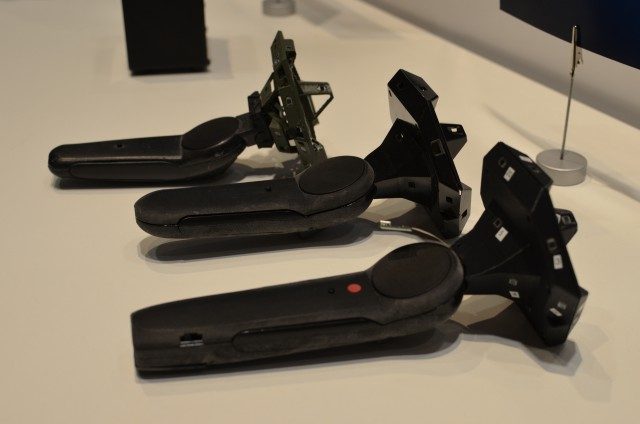
“After absorbing some lessons from our initial input experiments we designed this dedicated VR controller. This was the first prototype of a laser-tracked controller design. A controller similar to this will ship in the developer edition.”
15Miniaturized Laser Base Station – February 2015
“This was an early build of the upcoming laser base station design. It was improved over previous models in performance, reliability, and weight. Base stations similar to this will ship with the developer edition of the headset.”
16HTC ‘Vive’ Dev Headset – March 2014
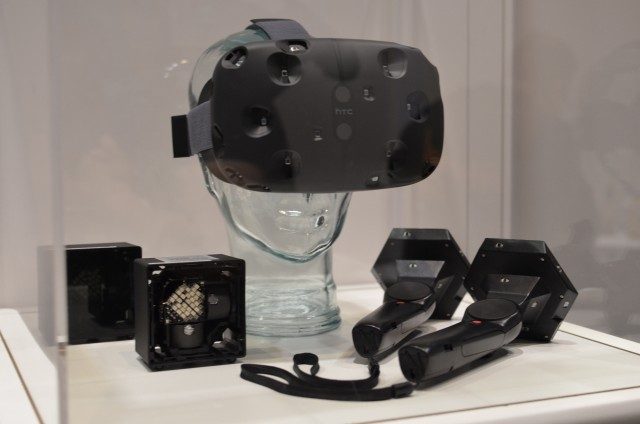
As of March 2014, this is the current state of the art in Valve and HTC’s Steam VR hardware – the HTC Vive. The system was unveiled at the Mobile World Conference in Barcelona and is being demonstrated there and at GDC 2015. This system is expected to ship to developers in Spring 2015.


